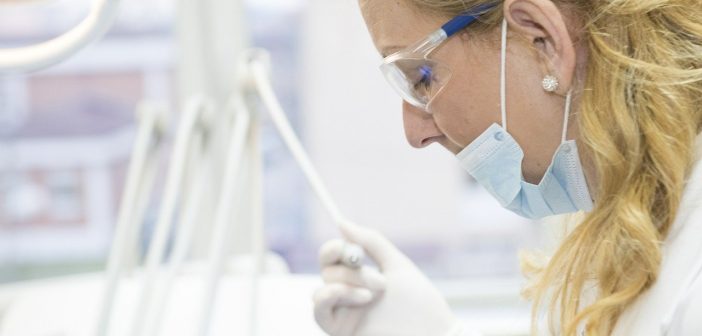Shrinidh Joshi, experienced clinical research consultant and medical writer, provides 5 best practices to keep in mind while conducting clinical trials for medical devices.
Medical devices play a critical role in the lives and health of millions of people worldwide. From everyday household items such as oral thermometers to complex implantables such as deep-brain stimulators, patients and the general public rely on regulators to ensure that legally marketed medical devices have been shown to be safe and effective. The Medical Device sector has become increasingly important for the healthcare of citizens, with an immense influence on expenditure. For example, in the European Union (EU) alone, this sector employs approximately 675,000 people, generates €110 billion in sales, representing over 25,000 companies, of which 95% are small and medium-sized enterprises [1]. While strict regulatory procedures exist for pharmaceuticals, there are rigorous regulations laid down by the U.S. Food and Drug Administration (FDA) and EU’s Medical Device Directive (MDD)only for class IIb and class III medical devices (i.e. medium and high-risk medical devices such as implantable medical devices or in vitro diagnostic devices). Regulators expect data that are provided by device manufacturers to reflect the risk profile of the device and need more crucial clinical evaluation before market approval [2]. Higher-risk and innovative moderate-risk devices (approximately 4%of all medical devices), which generally require the clinical evidence to show that the benefits of technology outweigh its risks are the primary focus of this article.
Clinical evidence of medical devices is often critical not only for showing the safety and effectiveness of the device but also for informing clinicians and patients about the preferred use of the device in the marketed clinical setting. Regulators are demanding more clinical evidence because they want to see more of it before granting market approval. Not only regulators but payers are also requiring more of it to substantiate product value claims and approve reimbursement. Even healthcare systems and physicians are asking for more of it when making purchasing decisions. This demand for clinical evidence from various stakeholders is forcing medical device companies to amass more clinical data on their products than ever before. Companies are responding to this pressure by running more clinical trials, focus group studies, and responding in real-time by making changes to the beta version of their medical devices. The latest trend is medical device companies increasingly are turning to clinical trials to differentiate their products from competitors and improve their odds of adoption in the marketplace.
Here are 5 essential tips for conducting clinical trials for medical devices.
1. Blinding
Blinding is an important element in all clinical trials; it reduces measurement bias related to the observer’s, doctor’s or patient’s subjectivity. For ethical or practical reasons, blinding is often more difficult to perform in randomized clinical trials on medical devices compared to pharmacological randomized clinical trials. Medical device companies need to remember that when it is not possible to blind healthcare professionals, a blind assessment of the outcome should be planned with experienced and trained staff as outcome assessors. The data managers, the adjudication committee, the independent data monitoring, and safety committee, the statisticians, and the conclusion drawers should also be blinded [3]. In case blinding is not used, medical device companies and their clinical trial correspondent need to give the reasons for not blinding,and discuss the limitations when reporting the results.As blinding of patients and trial personnel may be less often achievable in some medical device trials, objective outcomes must be chosen. Recently, regulatory agencies have emphasized for medical device companies to search for creative methods to blind individuals in their trials, if they choose to incorporate a novel technique, they must ensure that the blinding process itself does not introduce bias by impairing the ability to accurately assess the outcome. Any novel blinding technique should have 3 qualities: 1.) successful concealing of the group allocation, 2.) no impairment in the ability to accurately assess outcomes; and 3.) acceptance by the individuals that will be assessing outcomes [4].
Despite careful consideration of methods to blind individuals in medical device clinical trials, situations will invariably arise when some or all groups of individuals simply cannot ethically be blinded. Medical device companies must accept this reality and incorporate other strategies to minimize bias when blinding is not possible.
2. Outsourcing work to experts
It is an industry-wide trend that most device makers lack the internal resources and expertise to run a complete clinical trial operation in-house. It might be possible for a large medical device company to have an in-house clinical development team which can help in facilitating the clinical trials, however, for small medical device companies, which have little bandwidth, experience, and margin for error,the success of clinical trial or failure can be very crucial and sometimes clinical trial means life or death for the small company.
As a result, we are witnessing a corresponding rise in the outsourcing of clinical services to contract research organizations (CROs). Medical device companies are turning to CROs for assistance with clinical operations management, investigator recruitment, clinical monitoring, data management, biostatistical analysis, health economic and outcomes strategy, quality assurance, regulatory approval, and other needs. The single most important factor to consider when choosing clinical service providers or a CRO is experience in the medical device clinical trials or expertise in the field.
A new way of working is outsourcing work to on-demand experts. This is particularly beneficial to small companies who cannot afford the heavy costs and management spends on working with CROs or traditional consulting firms. Hiring individual medical device consultants can help you save time and costs, while working with experts directly to customize deliverables. From FDA submissions experts to medical content writers, specialists in the medical device industry are offering their services on a freelance basis.
3. Outcome assessment for clinical trials on Medical Devices
Defining relevant outcomes for clinical trials on the medical device is complex. This is partly due to the great variation in complexity and application for the different types of medical devices such as pacemakers, insulin pumps, operating room monitors, defibrillators, and surgical instruments,and partly due to a large variety of potentially relevant outcomes. A barrier specifically related to the medical device industry is that a common understanding of the concept of outcomes is missing. In clinical trials with medical devices, traditional outcomes such as survival, complication rates, or surrogates (biomarkers, imaging techniques, and omics) are used instead of the more appropriate hermeneutic outcome measures such as quality of life, autonomy, discomfort, disability, and life satisfaction. This does not mean to exclude specific outcomes for the functionality of medical devices such as device failure, device breaking, device slipping, migrating of the device or screw loosening, etc. It is important to understand that a hermeneutic outcome measure is a concept, not just a term with a mechanical definition.
Trials on medical devices funded by industry are prone to report positive outcomes and to conclude in favour of experimental interventions when obtaining non-significant test results [5]. While industry involvement is necessary to improve technology and to drive innovation of MDs, it must be based on scientific grounds and fully transparent.
4. Early scientific advice and expert panels
The medical technology industry is dominated by large numbers of Subject Matter Experts (SMEs). They are not trained in running trials or in trial methodology, but have a high output of diverse and innovative products. Access to early scientific advice, especially for smaller companies and academia, needs to be as easy and affordable as possible. Early scientific advice about the clinical development strategy and clinical trials for their devices is wished for. Engaging in the relationship in a meaningful way early helps align on SOP (standard operating procedure) and technology.
5. FDA/MDR regulatory requirements for medical device clinical trials
The above tips represent only a fraction of the best practices of clinical trials for medical device manufacturers. Apart from these key tips, compliance with regulatory and ethical requirements is also very important. The new Regulation on Medical Devices imposes increased responsibilities and well-defined interactions between all economic stakeholders involved, like medical device manufacturers, authorised representatives, importers, and distributors. Many of Europe’s and North American medical technology companies are lacking the infrastructure to fully deal with their obligations.
US FDA regulations for medical devices
In the US, medical devices are regulated by FDA. Medical device clinical studies in the US are divided into significant risk (SR) and nonsignificant risk (NSR) device studies. To conduct an SR device study, an investigational device exemption (IDE) application is required. The sponsors must have approval from both the FDA and an institutional review board (IRB) prior to beginning the study. Although NSR device studies require only IRB approval, the sponsors must comply with the abbreviated IDE requirements, such as labeling, informed consent, monitoring, and record keeping during the study. There are two basic regulatory pathways within the FDA to bring adevice to market: Pre-Market Approval (PMA) and the 510(k). Under the 510(k) process the manufacturer needs to demonstrate that the device is ‘substantially equivalent’ to a predicate device. Generally, bench testing data and perhaps a very small clinical study is all that is necessary for a device to demonstrate equivalency.Approval of a PMA device, on the other hand, generally requires the manufacturer to provide data from a pivotal study. These are large, multi-center, randomized clinical trials. These studies involve hundreds to thousands of patients and cost tens of millions of dollars to complete.
Also read: 13 mistakes to avoid in a 510(k) submission for quick FDA clearance
EU MDR regulations for medical devices
In the EU the device approval process for medical devices is very different from that in the U.S. Medical devices are regulated by the Medical Device Regulation (MDR) (2017/745) and IVDR (2017/746), These replace the previous three EU Directives 90/385/EEC on Active Implantable Medical Devices (AIMDD), 93/42/EEC on Medical Devices (MDD), and 98/79/EC on In Vitro Diagnostic Medical Devices (IVDMD). Despite the implementation of common regulatory frameworks in Europe, each member state has its own competent authority in charge of managing medical devices.
As part of the Essential Requirements in EU, clinical evaluation must be conducted for all medical devices in accordance with Directive93/42/EEC Annex X or Directive 90/385/EEC Annex 7. According to MEDDEV 2.7.1 revision 4, released on July 1,2016, manufacturers of high-risk or new devices must update their clinical evaluation reports (CER) annually, in contrast to every 2 to 5 years for other devices.
A medical device is approved for marketing in the EU once it receives a ‘CE mark’ of conformity.To obtain a CE mark, a Class III medical device needs only to demonstrate safety and performance, not necessarily effectiveness. Compliance with this standard usually can be demonstrated with much simpler and cheaper clinical trials than required by the FDA [6]. For this reason, medical device manufacturers typically prefer to introduce products in the EU well before they seek FDA approval.
As I have mentioned above this article only focuses on the key considerations for clinical trials involving medical devices and the table below summarizes the key tips for the medical device clinical trials.
Table 1: Five expert tips for medical device clinical trials
| 5 key characteristics of medical device clinical trials | Rationale |
| Fewer participants enrollment than drug trials. | End-points designed to show a “reasonable assurance of safety and effectiveness” tend to lead to modest sample sizes. In other cases, practical challenges limit the feasibility of conducting larger studies. |
| Device trials are less likely to be blinded or randomized than drug trials. | Blinding or randomization is impractical owing to the nature of the device or the condition under study. For other studies, FDA experience with the device type allowsfor single-group studies that compareresults with agreed-upon performancegoals or established objective performance criteria. |
| Device design or procedure may be modified during the trial. | In some cases, early clinical events or feedback from physicians or patients may lead to changes in the device or the procedure. Validation of the changes may require additional clinical data beyond the original plan but may not require an entirely new study if it can be shown that data on the original device or procedure is appropriate to leverage. |
| In some cases, existing data can partially or fully substitute for prospective trial data. | Regulators such as the FDA consider the clinical data that are available external to prospective studies for the specific purpose of supporting marketing applications. This is particularly relevant for consideration of expanded indications for approved devices in cases in which there is a body of evidence supporting the “off-label” use and in which it could be difficult or even unethical to randomly assign participants. |
| Many device trials assess iterative improvements on previous-generation devices. | Although some devices are truly new, the nature of device development is an iterative improvement on existing technologies as clinical experience grows and the science advances. In many cases, clinical data are required to evaluate the benefits and risks of the new device but not necessarily as extensive as for the original device. |
Hire the author
Shrinidh Joshi has over 10+ years of experience in pharmaceutical, clinical, regulatory and medical writing. He has worked both within and outside academia, for companies such as University Health Network, Krembil Research Institute, Sun Pharma, Virgilant, CannTrust and ThermoFisher Scientific. His expertise focuses on the pharmaceutical-biologics market; antibodies, regenerative medicine, cell, and gene therapy, viral products, cancer immunotherapy, mesenchymal stromal cells and bioreactors, medical devices, scaffolds, cannabinoids, etc. He has written several white papers, research papers and a book chapter.
Hire Shrinidh Joshi
References:
1.) European Commission. Growth. Internal Market, Industry, Entrepreneurship and SMEs; Medical Devices. 2016. http://ec.europa.eu/growth/sectors/medical-devices/. Accessed 24 May 2020.
2.) Eikermann M, Gluud C, Perleth M, Wild C, Sauerland S, Gutierrez-Ibarluzea I, et al. Commentary: Europe needs a central, transparent, and evidence based regulation process for devices. BMJ. 2013;346:f2771.
3.) Jarvinen TL, Sihvonen R, Bhandari M, Sprague S, Malmivaara A, Paavola M, et al. Blinded interpretation of study results can feasibly and effectively diminish interpretation bias. J Clin Epidemiol. 2014;67(7):769–72.
4.) Karanicolas PJ, Bhandari M, Walter SD, et al. Radiographs of hip fractures were digitally altered to mask surgeons to the type of implant without compromising the reliability of quality ratings or making the rating process more difficult. J Clin Epidemiol. 2009;62:214–23.
5.) Probst P, Knebel P, Grummich K, Tenckhoff S, Ulrich A, Büchler MW, Diener MK. Industry bias in randomized controlled trials in general and abdominal surgery: An empirical study. Ann Surg. 2016;264(1):87–92.
6.) In both the U.S. and EU, new-to-the-world devices may face the additional hurdle of gaining reimbursement from healthcare insurance companies, but the devices we studied are second and third generation products, so coverage determination has already been made prior to their introduction.







